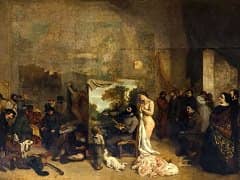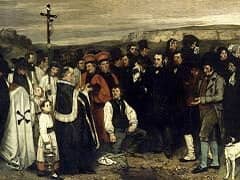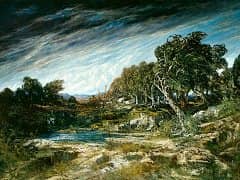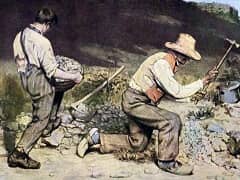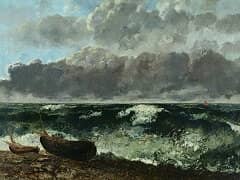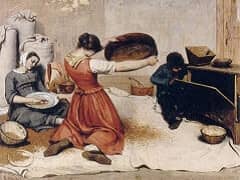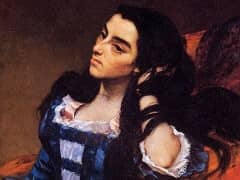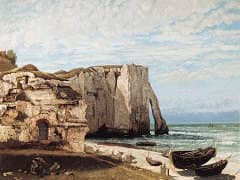Young Women from the Village, 1852 by Gustave Courbet
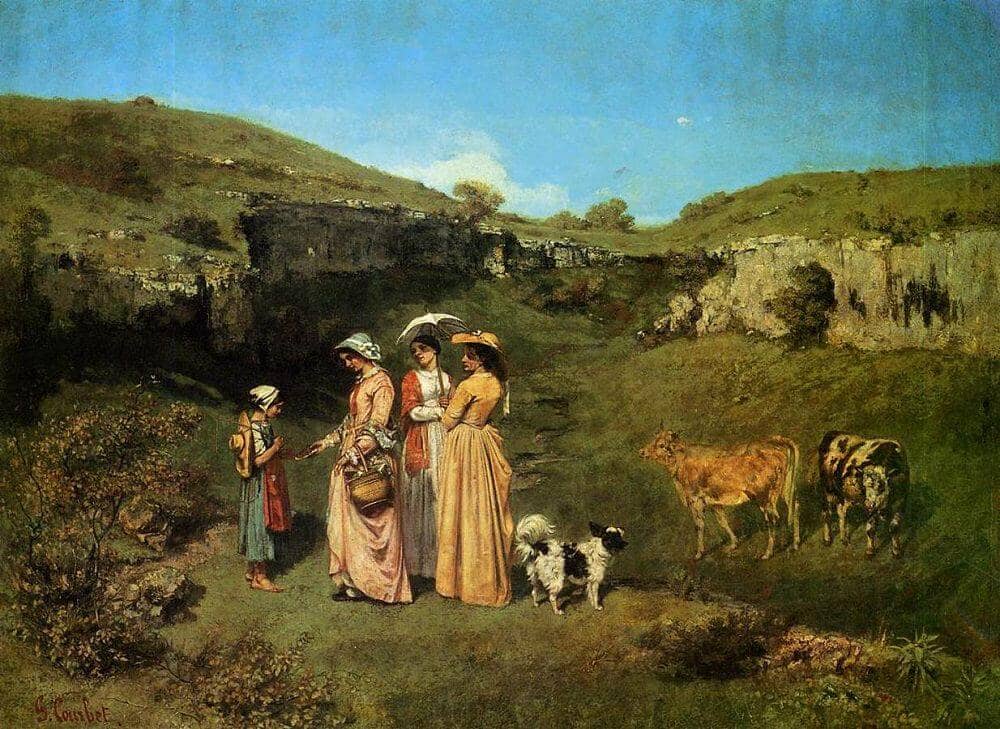
Writing to Champfleury about the new large painting that he would be sending to the Salon of 1852, Courbet claimed to have done something that would confuse the Jury, to have made "something gracious." He was implying a contrast with the Salon of the previous year, in which A Burial at Ornans, The Stonebreakers, and The Peasants of Flagey had caused such a critical scandal. In theory, the painter's subject - three sisters taking a Sunday walk in the country - might be supposed a harmless, "gracious" activity, but it is nonetheless likely that Courbet's remark was tongue-in-cheek.
This painting, which initiated a series of pictures devoted to the lives of women, shows Courbet's three sisters out for a walk in the Communal, a small valley near his native village of Ornans. Painted during the winter of 1851-52, Young Ladies of the Village was preceded by several studies, including an oil sketch (Leeds City Art Gallery) in which Courbet established the leading features of the Metropolitan's picture. In this, the final work, he gave the figures a more prominent role and altered the landscape, omitting the two large trees that in the study are silhouetted against the sky. He also repainted and enlarged the cattle.
When the work was exhibited in the Salon of 1852, critics bitterly attacked it, finding it tasteless and clumsy and berating the common features and countrified costumes of the three girls, the "ridiculous" little dog and cattle, and the painting's overall lack of unity, including traditional perspective and scale. Ironically, the very effects that Courbet worked hardest to achieve were the ones that proved most troublesome.


